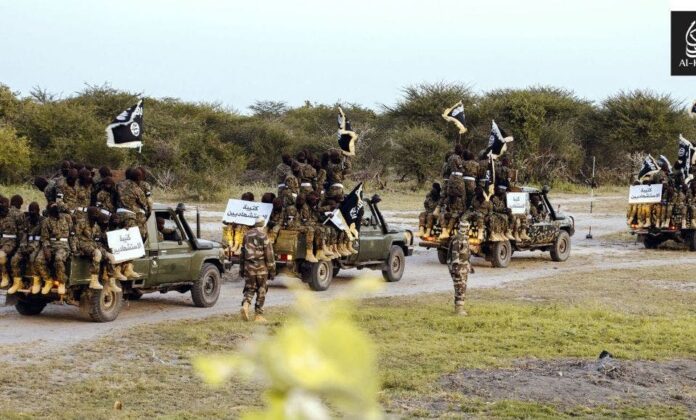Mogadishu (caalamka.net) – Despite a significant blow on June 19th that claimed 43 al-Shabab fighters in a Somali National Army (SNA) airstrike, the group’s activities and presence in East Africa remain unabated.
The strike, coordinated with an undisclosed foreign partner, allegedly the U.S. Africa Command (AFRICOM), eliminated two high-ranking commanders, Aden Abdirahman Aden, and Kenyan national Idris Abdiramin Nur, in Somalia’s Lower Juba region.
Although al-Shabab has experienced frequent losses from U.S. airstrikes and clashes with the African Union Transmission Mission in Somalia (ATMIS), the group’s resilience is worth noting.
Eyewitnesses revealed a tragic loss of 17 lives during an attack on a Somali special forces base in Masagawa in late May, twelve of which were al-Shabab militants.
In February, three U.S. airstrikes neutralized 24 al-Shabab fighters. Despite these efforts, the group continues its audacious attacks, demonstrating a surplus of manpower and tenacity.
Revamping Somalia’s military leadership
The SNA announced the appointment of Brigadier General Ibrahim Sheikh Muhydin as the new commander on the very day the airstrike occurred.
Somali President Hassan Sheikh Mohamud endorsed Muhydin’s appointment through a decree following the nomination by a council of ministers.
The restructuring is part of an impending offensive against al-Shabab, termed the second phase of operations by President Mohamud.
The President said earlier this year about this new stage: “We have more experience than when we first entered the war in Galmudug and Hirshabelle states. We’ve learned the tactics of al-Shabab. Our morale tells us that we are capable of defeating them. The government’s current policy is to liberate the country from Al Shabab.”
United against the common Enemy
Marine Corps General Michael Langley, head of AFRICOM, undertook a tour of Mogadishu in early June in the wake of major al-Shabab attacks on ATMIS forces.
His visit included meetings with President Mohamud, Somali defense leadership, state department personnel, and ATMIS troops.
Additionally, General Langley traveled to Kismayo to observe U.S. troop operations and training, meeting Jubaland Federal Member State President Ahmed Madobe and Somali special forces leadership.
The mission was a clear statement of U.S. dedication to combating al-Shabab, marking a significant policy reversal from former President Trump’s withdrawal of U.S. troops from Somalia.
Al-Shabab’s reach is not confined to Somalia; its terrorism extends across the border into neighboring countries in retaliation for their troop deployment within Somalia.
On June 7th, al-Shabab alleged a suicide bombing against an Ethiopian military base near the border town of Dollo.
Ethiopia, however, refuted the claim, stating that their forces had successfully foiled the attempted attack.
The ability of al-Shabab to launch these daring cross-border attacks, regardless of their outcome, underscores its capacity to threaten regional stability.
Kenya: A growing target
Al-Shabab has escalated its operations in Eastern Kenya and confirmed attacks over the last month have killed over 30 individuals, including soldiers, police officers, and civilians.
In one of the ghastly incidents on June 24th, four villagers were brutally executed and another shot in the coastal Lamu province of Kenya.
In a France 24 interview, Kenyan President William Ruto promised a robust response to al-Shabab, hinting at the possibility of keeping Kenyan troops in Somalia beyond the end of June withdrawal date.
Even though al-Shabab was forced to retreat to the countryside after losing control of Mogadishu in 2011, its increased attacks and resolute insurgency highlight its burgeoning threat to stability in the Horn of Africa.
This enduring menace underlines a crucial reality: al-Shabab does not appear to be losing momentum anytime soon.






